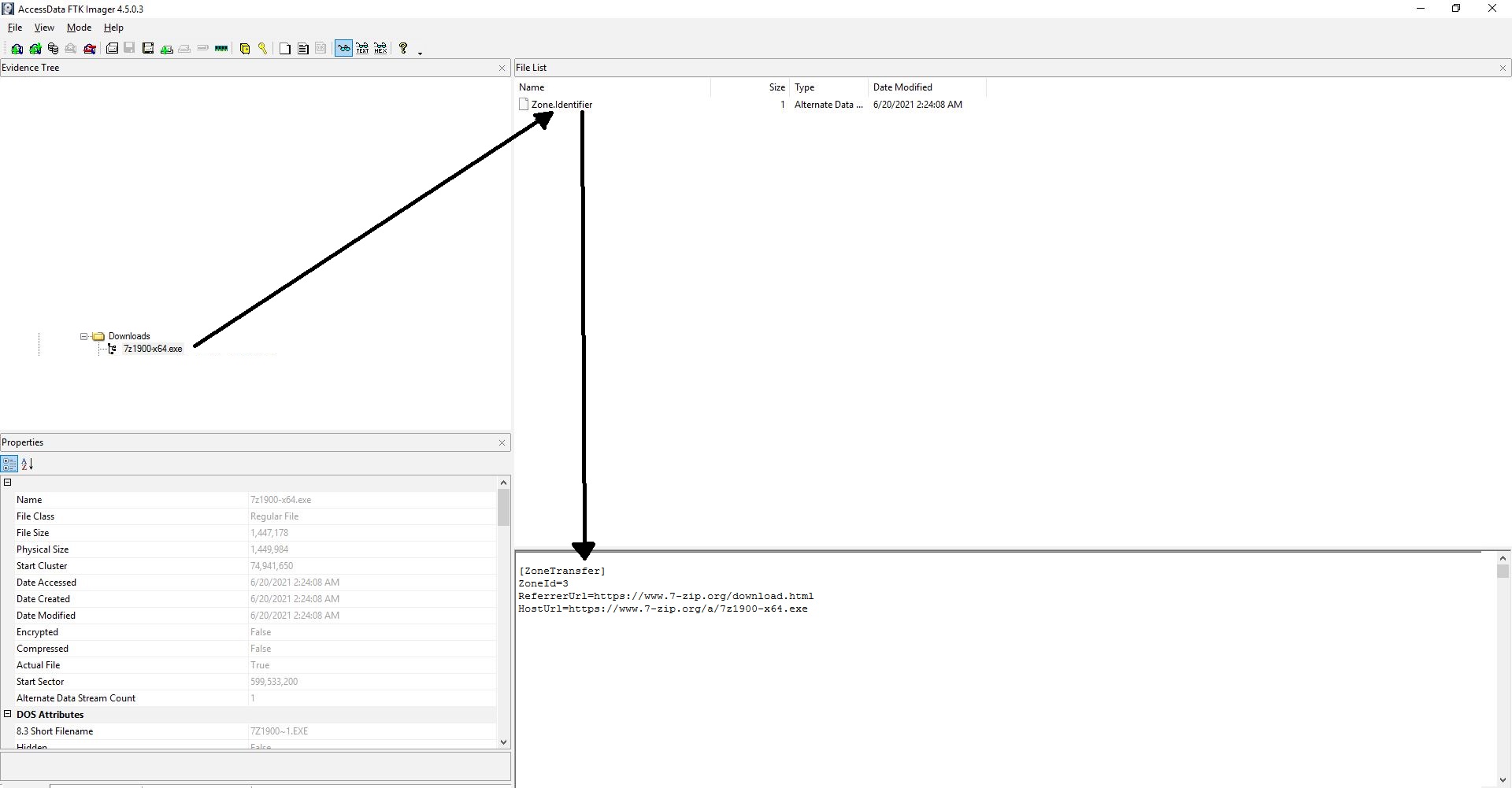New technology file system (ntfs)
The New Technology File System (NTFS) is a file system developed and introduced by Microsoft in 1995 with Windows NT. As a replacement for the FAT file system, it quickly became the standard for Windows 2000, Windows XP and Windows Server 2003.
The features of NTFS include:
- Hard-links
- Improved performance, reliability and disk space utilization
- Security access control lists
- File system journaling
Time Stamps
NTFS keeps track of lots of time stamps. Each file has a time stamp for 'Create', 'Modify', 'Access', and 'Entry Modified'. The latter refers to the time when the MFT entry itself was modified. These four values are commonly abbreviated as the 'MACE' values. Note that other attributes in each MFT record may also contain timestamps that are of forensic value.
Additional information on how NTFS timestamps work when files are moved or copied is available here: Microsoft KB 299648
Changes in Windows Vista
In Windows Vista (presumably as of Windows XP SP3), NTFS no longer tracks the Last Access time of a file by default. This feature can be enabled by setting the NtfsDisableLastAccessUpdate value to '0' in the Registry key:
HKEY_LOCAL_MACHINE\SYSTEM\CurrentControlSet\Control\FileSystem
Note that this feature has been around since as early as Windows 2000 1.
Alternate Data Streams
The NTFS file system includes a feature referred to as Alternate Data Streams (ADSs). This feature has also been referred to as "multiple data streams", "alternative data streams", etc. ADSs were included in NTFS in order to support the resource forks employed by the Hierarchal File System (HFS) employed by Macintosh systems.
As of Windows XP SP2, files downloaded via Internet Explorer, Outlook, and Windows Messenger were automatically given specific "zoneid" ADSs. The Windows Explorer shell would then display a warning when the user attempted to execute these files (by double-clicking them).
Sysadmins should be aware that prior to Vista, there are no tools native to the Windows platform that would allow you to view the existence of arbitrary ADSs. While ADSs can be created and their contents executed or viewed, it wasn't until the "/r" switch was introduced with the "dir" command on Vista that arbitrary ADSs would be visible. Prior to this, tools such as LADS could be used to view the existence of these files.
Microsoft FSRM (File System Resource Manager) also uses ADS as part of 'file classification'.
Examiners should be aware that most forensic analysis applications, including FTK Imager,encase and ProDiscover, will display ADSs found in acquired images in red.

Advanced Format (4KB Sector) Hard Drives
NTFS does not natively handle drives that use the new standard of 4KB sectors. For information on this, see Advanced Format.
USN Change journal
The update sequence number (USN) change journal, provides a persistent log of all changes made to files on the volume. As files, directories, and other NTFS objects are added, deleted, and modified, NTFS enters records into the USN change journal, one for each volume on the computer. Each record indicates the type of change and the object changed. New records are appended to the end of the stream.
fsutil usn ...
Transactional NTFS (TxF)
According to MSDN Transactional NTFS (TxF) allows file operations on an NTFS file system volume to be performed in a transaction.
Several TxF related file-system-metadata files can be found in the file-system-metadata directory: \\$Extend\\$RmMetadata\. TxF also uses the MFT attribute \$LOGGING_UTILITY_STREAM with the name \$TXF_DATA.
TxF uses the Common Log File System (clfs)
FILETIME date and time values
import datetime
def FromFiletime(filetime):
"""Converts a FILETIME timestamp into a Python datetime object.
The FILETIME is mainly used in Windows file formats and NTFS.
The FILETIME is a 64-bit value containing:
100th nano seconds since 1601-01-01 00:00:00
Technically FILETIME consists of 2 x 32-bit parts and is presumed
to be unsigned.
Args:
filetime: The 64-bit FILETIME timestamp.
Returns:
A datetime object containing the date and time or None.
"""
if filetime < 0:
return None
timestamp = filetime / 10
return datetime.datetime(1601, 1, 1) + datetime.timedelta(microseconds=timestamp)
Also see
External links
- Technet: How NTFS Works, by Microsoft
- Master File Table
- MS-FSCC - Known Alternate Stream Names, by Microsoft
- Wikipedia: NTFS
- Wikipedia: NTFS Reparse point
- MSDN: Transactional NTFS
- Wikipedia: Transactional NTFS
- Default cluster size for NTFS, FAT, and exFAT
- Distributed Link Tracking and Object Identifiers
- New Technologies File System (NTFS), by the libfsntfs project, August 2009
- The Four Stages of NTFS File Growth, by Jeff Hughes, October 16, 2009
- Incident Response with NTFS INDX Buffers – Part 1: Extracting an INDX Attribute, by William Ballenthin, September 18, 2012
- Incident Response with NTFS INDX Buffers – Part 2: The Internal Structures of a File Name Attribute, by Jeff Hamm, September 26, 2012
- Analysis of hidden data in the NTFS file system, by Cheong Kai Wee, January 2006
- The Four Stages of NTFS File Growth, Part 2, by John Marlin, March 12, 2015
- Parsing the \$MFT NTFS metadata file, by Joachim Metz, April 30, 2020
- Windows Container Forensics, by Jonathan Greig, July 13, 2021